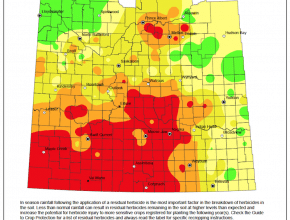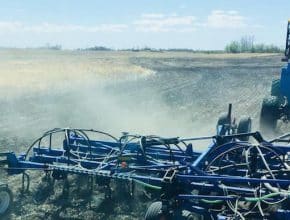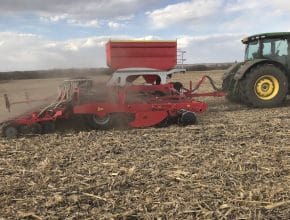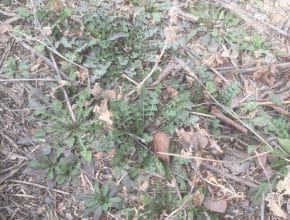Home / Canola Watch / May 9, 2018 - Issue 6
-
Three questions on fertilizer applications to test your knowledge…
-
The map shows herbicide carryover risk in Saskatchewan based on summer 2017 precipitation. In-season moisture from last season is the measure that influences herbicide breakdown…
-
Part way through the harrowing job, I asked myself: “Why am I doing this?” …
-
Should I seed now or wait for the moisture situation to improve? What seed-placed fertilizer rate is appropriate in dry conditions? Should I seed deep enough to reach moisture?…
-
Each seeding tool has a different ideal speed for consistent placement. And soil type, residue cover and moisture will mean different ideal speeds from field to field and year to year. Every field could be handled differently to find a balance between placement and speed…
-
Weeds that emerge before the crop can be highly damaging to crop yield potential because they out-compete the crop for moisture, nutrients and sunlight. When the crop emerges, all early weeds need to be dead…
-
Take the thousand-seed weight for each canola seed lot and run it through the seed rate calculator at canolacalculator.ca. This will indicate the seeding rate required to hit your target stand. It takes two minutes – or less…
-
Crop scouting can begin the week after seeding to check on early emergence issues. The key with scouting at any crop stage and for any issue is to make a proper diagnosis before taking corrective action. Here are common early-season problems in canola and the set of symptoms often associated with each…
-
Step one: Call 911 as soon as possible, and use the fire extinguishers if it is safe to do so. Know the legal land location (Township Road and Range Road) to provide directions to the fire department…





